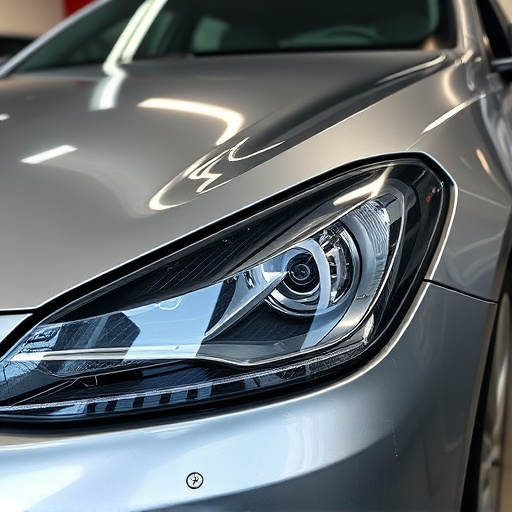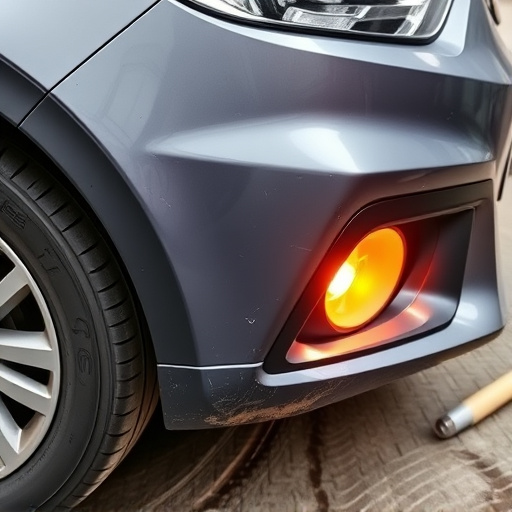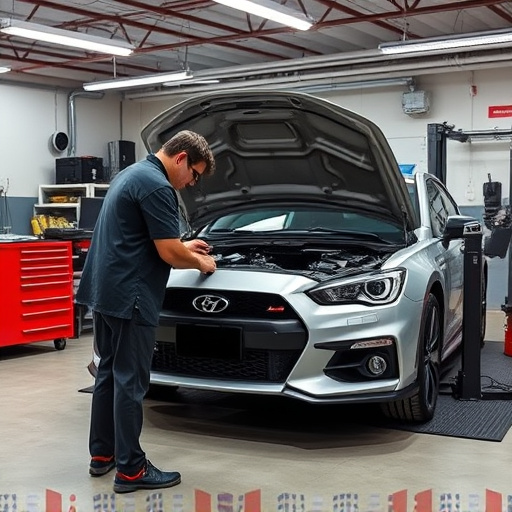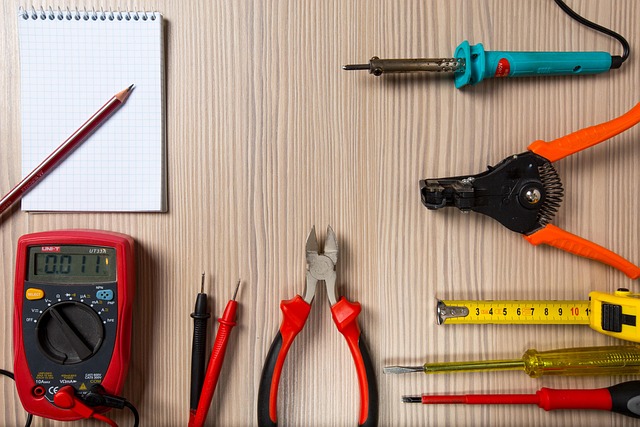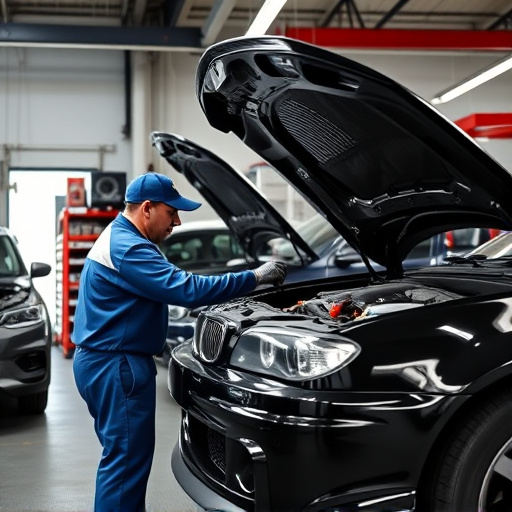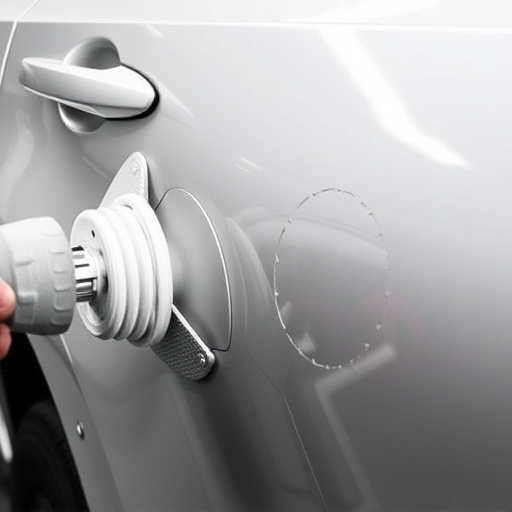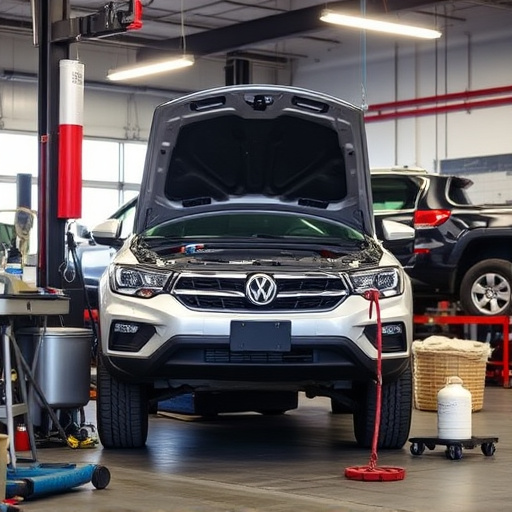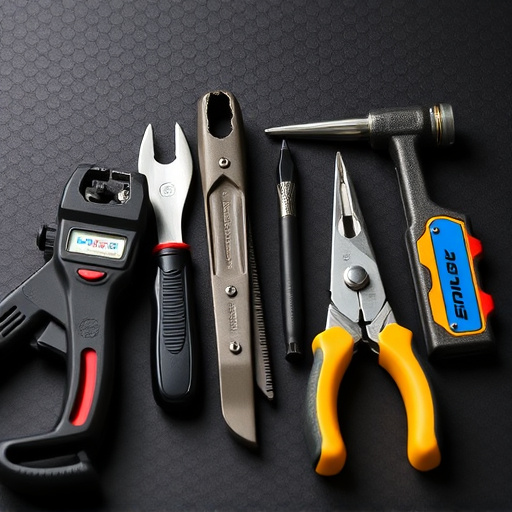Tesla Model S front end repair requires meticulous attention, from inspecting for visible impacts to specialized techniques like paintless dent repair (PDR). Technicians assess and repair body components while ensuring optimal thermal management system (TMS) efficiency post-collision. Regular TMS maintenance is crucial for passenger comfort, electronics protection, energy efficiency, and long-term cost savings.
“Uncover the essential aspects of maintaining your Tesla Model S with a focus on its front end and thermal management system. This comprehensive guide delves into identifying and evaluating front end damage, providing a detailed step-by-step repair process for an efficient restoration. Additionally, we explore the critical role of the thermal management system, ensuring optimal performance and safety. Discover key checks and maintenance tips to keep your Tesla Model S running smoothly, emphasizing the importance of proactive care.”
- Evaluating Tesla Model S Front End Damage
- Step-by-Step Front End Repair Process
- Thermal Management System: A Crucial Checkup
Evaluating Tesla Model S Front End Damage

Evaluating damage to a Tesla Model S front end requires meticulous attention to detail. As with any car collision repair, assessing the extent of the harm is crucial before proceeding with any repairs. Inspect the vehicle for visible signs of impact, including dents, crumple zones, and damaged panels such as fenders and bumpers. Even subtle indications of stress or misalignment can point to underlying structural damage that needs professional attention.
When it comes to Tesla Model S front end repair, automotive body work becomes an art. Skilled technicians use specialized tools and techniques to address various issues, from simple fender repairs to complex frame straightening. The thermal management system, a key component of the vehicle’s overall performance, must also be checked for any leaks or damage that could compromise its efficiency after a car collision repair. This meticulous approach ensures not only the aesthetic restoration but also the safety and optimal functioning of the Tesla Model S following a frontal impact.
Step-by-Step Front End Repair Process

The Tesla Model S front end repair process involves a meticulous and precise approach to ensure optimal vehicle performance and aesthetics. It begins with a thorough inspection to identify any damage, ranging from minor dents to more significant crumples. The next step is to utilize advanced techniques such as paintless dent repair (PDR) where applicable, preserving the original factory finish and minimizing disruption to the vehicle’s body panels.
For more complex issues or severe damage, a trip to a specialized body shop service might be necessary. Skilled technicians will assess and make repairs, including replacement of front components like fenders, grilles, and headlights. The thermal management system, crucial for maintaining optimal operating temperatures, is also checked during this process. This includes inspecting and replacing any faulty components related to the vehicle’s cooling system, ensuring the Model S continues to perform efficiently on the road.
Thermal Management System: A Crucial Checkup

The Tesla Model S, known for its cutting-edge technology and sleek design, requires regular maintenance to keep its performance at peak levels. One often overlooked but crucial aspect is the Thermal Management System (TMS). This system plays a vital role in maintaining optimal temperatures within the vehicle, ensuring both passenger comfort and the longevity of sensitive electronic components. A thorough checkup involves inspecting key components like radiators, heat exchangers, and cooling fans for any signs of damage or debris buildup.
During a Tesla Model S front end repair, technicians should pay close attention to the TMS as it’s integral to addressing issues related to auto glass replacement, car paint repair, or even car collision repair. Efficient thermal management not only prevents overheating but also contributes to energy efficiency. By keeping the system in top condition, owners can expect smoother performances and reduced maintenance costs down the line.
In conclusion, performing a thorough inspection and repair of the Tesla Model S’s front end is essential for maintaining optimal vehicle performance. From assessing damage to implementing a robust thermal management system, each step ensures a safe and efficient driving experience. Remember that proper care extends not just to the exterior but also to the car’s internal systems, making regular checks a game-changer in preserving your Tesla’s longevity and value. For any Tesla Model S front end repair needs, understanding these processes is key to ensuring top-notch results.

